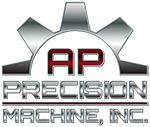In product engineering and industrial processes, every strategic decision matters, especially when the budget is a concern. Many professionals still believe that custom-made parts are more expensive than using off-the-shelf components. But in practice, made-to-order manufacturing is one of the smartest strategies to reduce operational costs and increase overall project efficiency.
In this article, you’ll understand how custom part manufacturing can deliver real savings for engineers, buyers, and technical managers—not just in the short term, but throughout the entire lifecycle of a project.
What is custom manufacturing?
Custom manufacturing (also known as made-to-order production) is the process of producing a part or component exactly according to the customer’s specifications—based on a technical drawing or pre-existing design. Instead of adapting off-the-shelf solutions that “almost fit,” you get the ideal part for your needs—no rework, no adjustments, and no waste.
5 Ways Custom Manufacturing Reduces Engineering Costs
- Eliminates Waste from Generic Parts
Off-the-shelf components usually come in standard sizes and often require modifications. That means rework, extra labor, and even scrapping ill-fitting parts. A custom part, on the other hand, is manufactured with precision and ready to use, eliminating material waste and assembly time. - Reduces Technical Failures and Future Maintenance
A well-fitted component minimizes gaps, noise, vibrations, and undue stress on equipment. This lowers the risk of failures, unplanned downtime, and corrective maintenance costs—while increasing equipment lifespan. - Ensures Perfect Compatibility in Complex Projects
In industries like pharmaceuticals, aerospace, or cosmetics, every millimeter counts. Generic components often lack the precision required—jeopardizing the entire system. Custom parts avoid misfits, ensure proper sealing, and operate within tight tolerances, reducing costs related to rework and performance loss. - Speeds Up Assembly and Installation Processes
Time is money—and every hour saved on the shop floor means real gains. When parts fit perfectly into the designed layout, assembly time is drastically reduced, which accelerates project startup and prevents schedule delays. - Prevents Overstocking and Obsolescence
By producing only what the project demands, you avoid unnecessary inventory, surplus parts, and the risk of obsolescence. This results in direct budget savings and improves cash flow, especially in made-to-order projects.
Conclusion
Custom manufacturing isn’t just a technical solution—it’s a smart engineering decision that delivers savings, quality, and efficiency. By choosing to produce parts to order, your company avoids waste, reduces operational failures, and ensures a perfect fit for every project component.
Whether for small batches or complex demands, having an experienced partner makes all the difference. AP Precision Machine, Inc. understands the challenges of each industry and delivers precise solutions—quickly and with the care of a team that works directly with you, the engineer or buyer.
Talk to an AP Precision Machine specialist now by clicking the button below.


